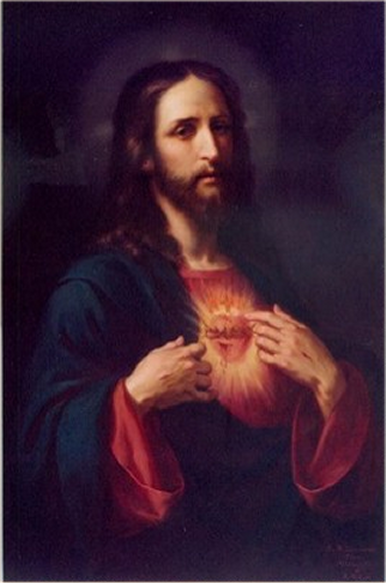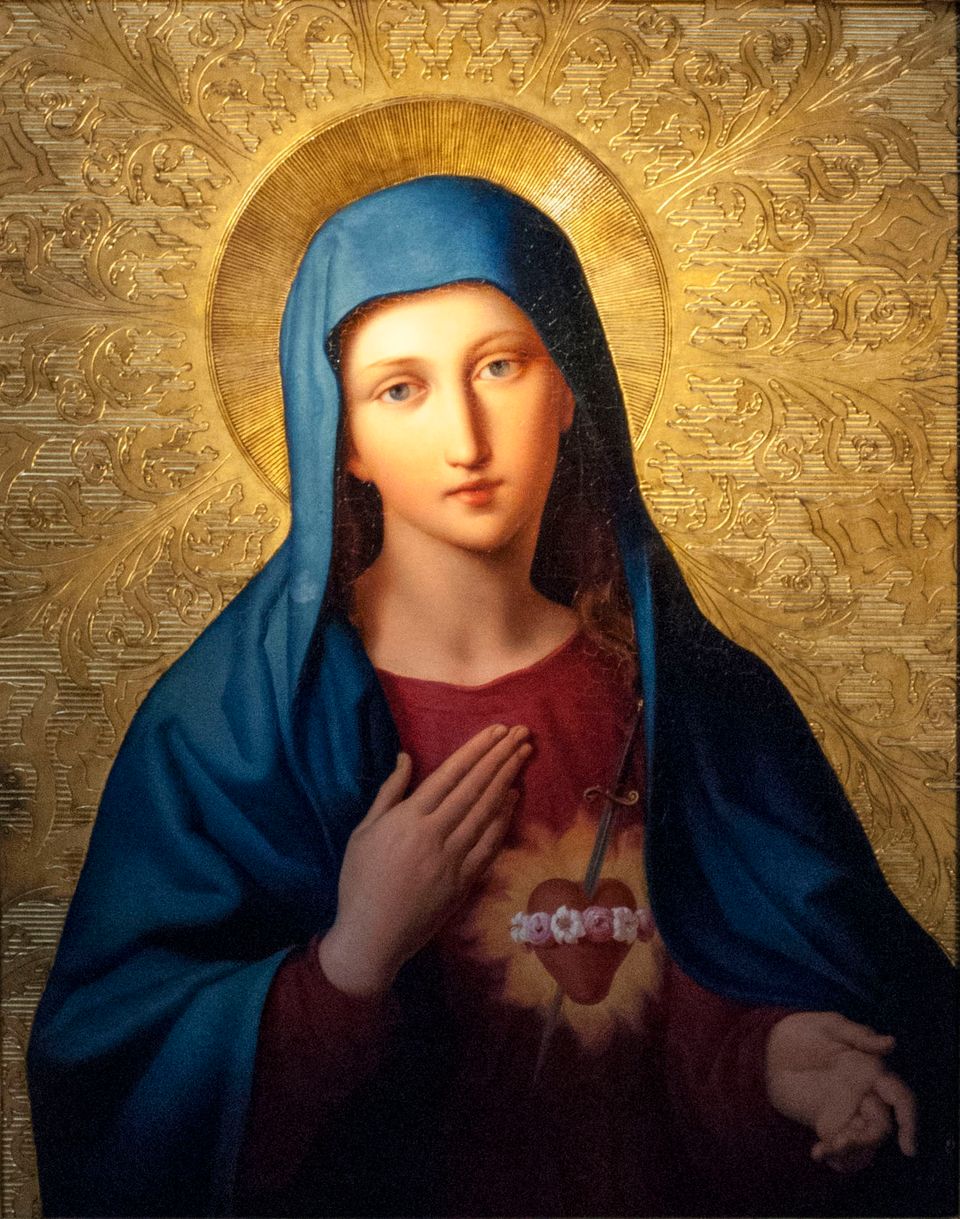Sacred Art - Sacred Heart

Title: Sacred Heart of Jesus
Artist: José María Ibarrarán y Ponce (1854 - 1910)
Style: Academic (Old Royal Academy of Fine Arts in Mexico)
Medium: Oil on Canvas
Colours: The artist uses tenebrism. The main colours used are black, blue and red.
Symbolism and Interpretation:
- Black; the figure of Christ is surrounded in shadow. This effect is called 'tenebrism', which uses strong contrasts between light and dark to create a dramatic spotlight effect. It is a variation of the painting style called Chiaroscuro, which also uses strong contrasts between light and dark but is less dramatic. Ibarrarán uses this technique to emphasis Christ even more as the, "Light that shineth in darkness (Jn 1:5 DR)."
- Blue is the colour associated with the infinite heavens, majesty, mystery, and the spiritual life. Christ's outer garment is blue, emphasising his divinity and kingship. In some traditions, blue can also mean humanity. So Christ, who is divine, clothed himself with our humanity.
- Red is the next prominent colour in this painting. Red signifies blood, humanity, fire, life, and sacrifice. This means that Christ truly became a man like us, that he is life and burns with love for us even to the point of sacrificing himself for us on the cross. The red tunic is under the blue mantle which together represents the two natures of Christ—human and divine. Another tradition but one less known is that he wears red to signify that he is divine and wears blue on top to signify that he put on our humanity.
- Christ's right hand pulls back the veil of his divinity to reveal his humanity. He shows us the wounds on his hands. Our hands are the tools that we use for work and so his pierced hands show us the work of his hands was his sacrifice for us on the cross. With his other hand he points to his Sacred Heart, wounded on account of our sins. His sacred heart lies open to us in the midst of his humanity. It is through his humanity that we have access to his heart.
- Christ shows us his wounded heart surrounded by thorns. A heart ready to burst out of love yet restrained by the thorns of our sins. The heart represents the love and affection that Christ has towards us.
- The thorns are woven into a crown like the one that was put on his head during his passion. The thorns represent the stings caused by our sins. They surround his heart because Christ felt his wounds to the depths of his heart. But in the resurrected Christ, the crown of thorns also is a crown of victory over death and sin.
- The wound in the heart recalls when Christ's heart was pierced by a lance after his death and blood and water flowed from his heart. The blood and water represent the two life-giving sacraments of the church—Baptism and Holy Communion. The wounded heart proves that he was indeed dead and died for us.
- The droplets of blood represent the new covenant in his blood and the blood which he shed for our sins. It is also connected to the Eucharist where wine is changed into the Blood of Christ.
- The flames above his heart represent the burning love Christ has for us. The flames radiate from either side of the base of the cross. This shows the sacrificial nature of the crucifixion—Christ was offered as a burnt offering, giving himself completely to God the Father, not holding anything back for himself. When Christ said, "It is consummated," that was everything. The flame also represents the presence of God, hearkening back to the pillar of fire and the burning bush in the Old Testament.
- The Cross in the midst of the flames shows us that it is through the cross that Christ's burning love for us was truly displayed. The cross appears to be planted in the heart of Jesus, showing us that the meaning of the cross must be understood through the heart of Jesus.
- The rays of light show that his love is not merely human love but divine love that radiates from his heart and lights the world. The heart of Jesus is the light of the world.
Reflection
June is the month dedicated to the Sacred Heart of Jesus. Christ says in the Gospels, "Come to me, all you that labour, and are burdened, and I will refresh you. Take up my yoke upon you, and learn of me, because I am meek, and humble of heart: and you shall find rest to your souls. For my yoke is sweet and my burden light (Mt 11:28-30 DR)." When one's heart burns with love for someone else, the hardships and pains that one endures become light. When one goes to Christ, we can take up his yoke to do the will of the father upon us since the one thing necessary is to love, worship, and adore God in this life. Taking time out to meditate on the Sacred Heart will help us put everything else into perspective. Most Sacred Heart of Jesus, Have mercy on us!
